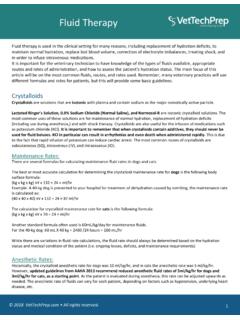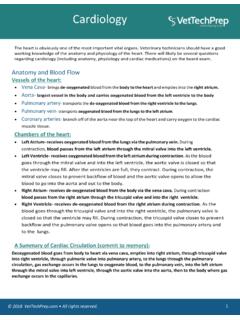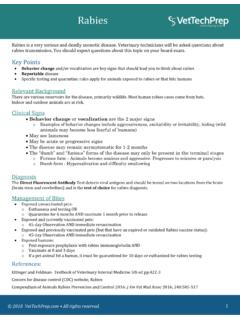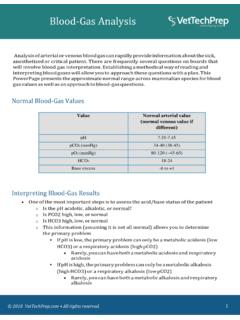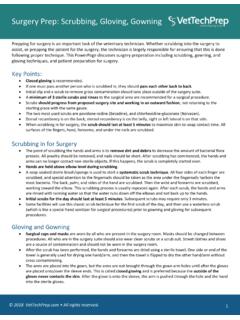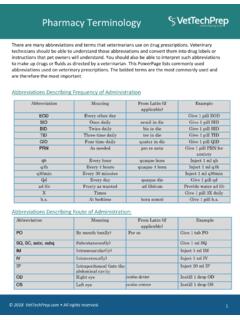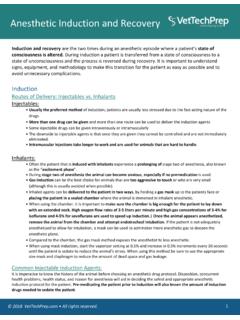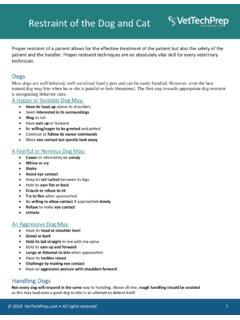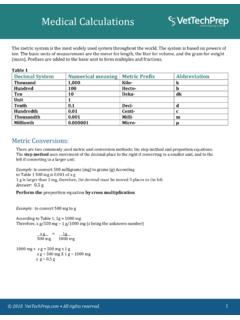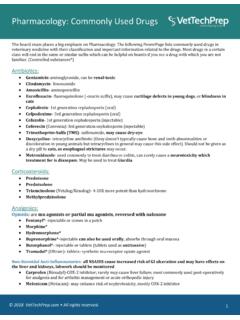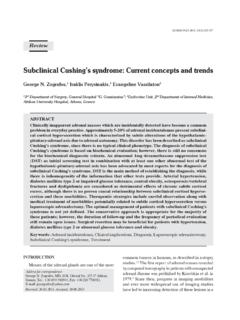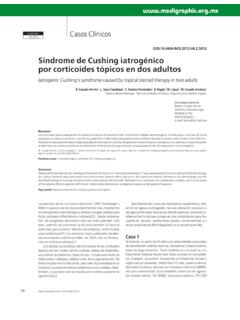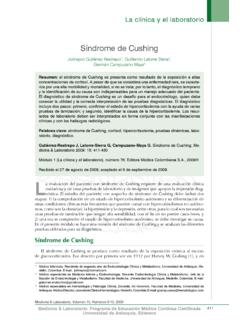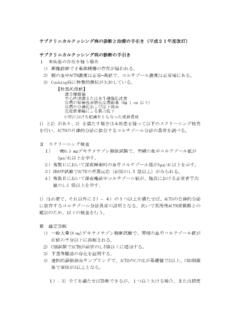Transcription of Hyperadrenocorticism (Cushing’s Disease) - VetTechPrep
1 Hyperadrenocorticism ( cushing s disease ) Animals exposed to excess cortisol develop the classic set of signs known as cushing s disease . This PowerPage provides a review of the signs, tests, and treatments of Hyperadrenocorticism with some supplemental information on equine cushing s. It is highly unlikely that you will see questions about cushing s in any species other than dogs and horses on a board exam, although it can occur infrequently. Background 1) cushing s disease is caused by excessive circulating cortisol.
2 Cortisol is produced by the adrenal gland(s) 2) Spontaneous disease is caused by either a pituitary or an adrenal mass. Identical signs can be caused iatrogenically in dogs that are on oral or topical steroids. Most cases are pituitary-dependent The pituitary secretes ACTH, which signals the adrenals to continue to produce cortisol If a pituitary mass is present causing excess ACTH release, the negative feedback from adrenal cortisol is ineffective; cortisol secretion thus continues and leads to cushing s Clinical Signs Symptoms of cushing s disease include the following: Increased urinating and drinking (Polyuria and polydipsia or PU/PD) Pot belly appearance Hair loss Calcinosis cutis Excessive panting May have concurrent hypertension Laboratory Findings Laboratory findings.
3 Markedly elevated alkaline phosphatase +/- proteinuria Dilute urine (isosthenuria/hyposthenuria) Prone to urinary tract infections (urine culture and sensitivity is recommended routinely in these patients because they may have a subclinical UTI.) Diagnosis and Treatment Testing is with the ACTH stimulation test or the Low-Dose Dexamethasone Suppression Test The latter may help to differentiate a pituitary cause from an adrenal cause There are other tests which may be helpful (Urine Cortisol:Creatinine Ratio, Endogenous ACTH, High-dose Dex.)
4 Suppression Test, Abdominal Ultrasound) 2018 All rights reserved. 1 Hyperadrenocorticism ( cushing s disease ) Treatment of choice is currently trilostane (Vetoryl) Works by inhibiting steroid synthesis and usually does not cause permanent change in the adrenal gland (but is possible) Other treatment is mitotane (Lysodren) Destroys part of the adrenal cortex to prevent cortisol production Lysodren may cause more side effects and causes permanent changes that could lead to hypoadrenocorticism Treatment is only recommended in dogs that have clinical disease which warrants therapy, not just because they have an abnormal screening stimulation test Equine cushing s Horses with cushing s may have Hirsutism (an abnormal long and way haircoat) May also have some symptoms discussed for dogs above Reference.
5 Ettinger, Feldman. Veterinary Internal Medicine, 3rd ed. pp 1419-1429, 1460-1499 2018 All rights reserved. 2
